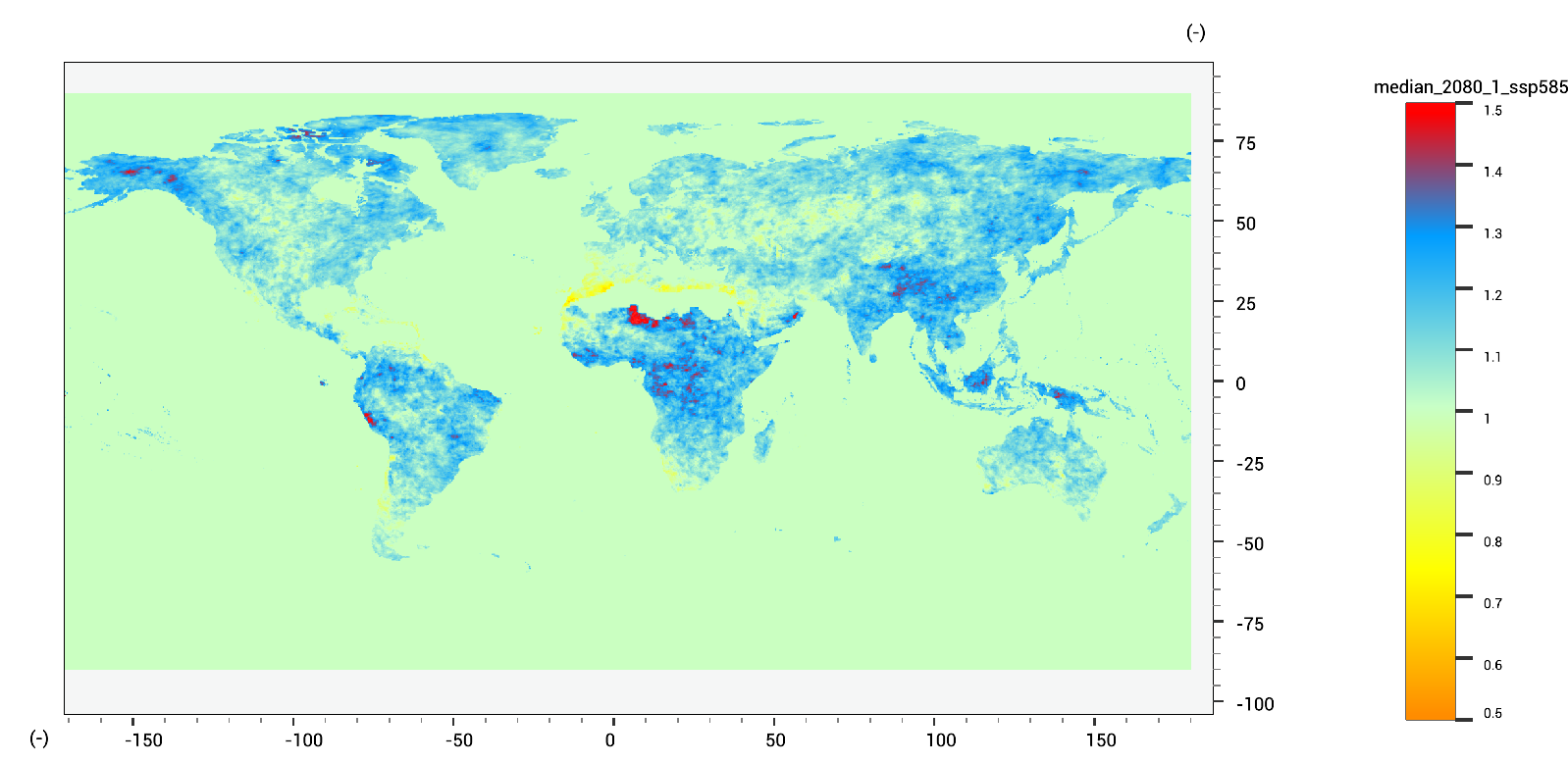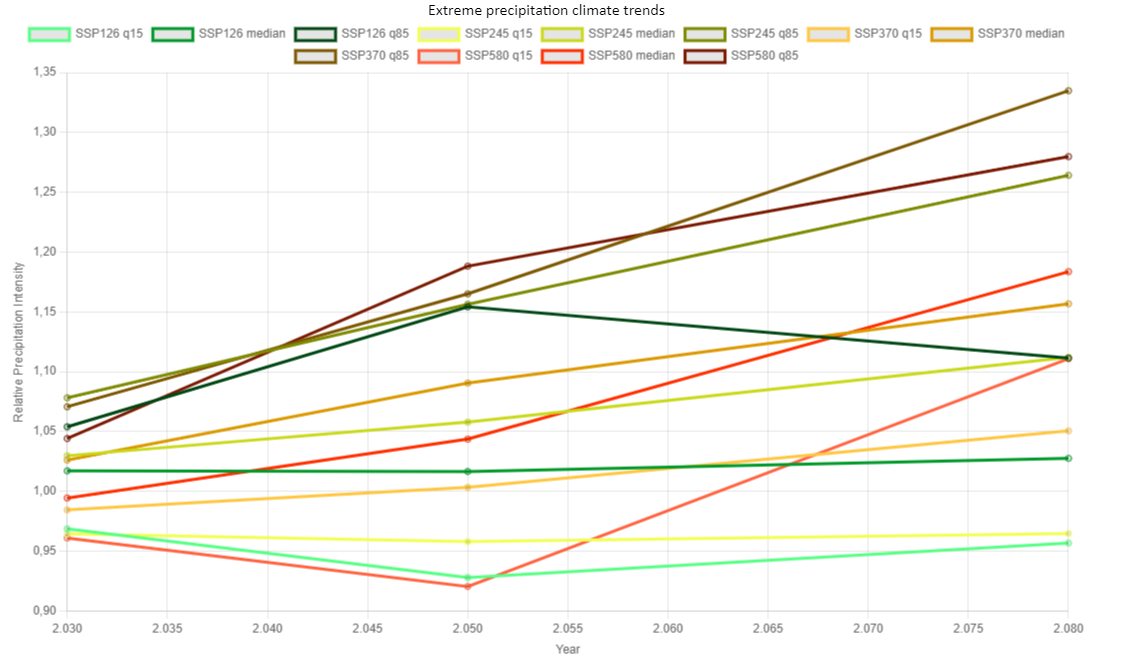FastFlood Docs
Climate Change
Climate Change Analysis
During an analysis of flood hazard, it can be relevant to assess the impact of future climate change on the flood intensities and flow rates.
Since update 0.12, FastFlood provides an automatic built-in option to load climate change effects based on global climate model analysis.
This will adjust your loaded precipitation—either a design storm of specific return period or an actual event—to the statistical distribution of extreme rainfall events under climate change.
Analysis method
The climate change analysis was carried out based on the statistically-downscaled CMIP6 ensemble, published by NASA (see the NASA NEX-GDDP CMIP6 ensemble).
This dataset provides an ensemble of approximately 20 global climate models, all downscaled using statistical methods to a unified grid at higher resolution.
We carried out a General-Extreme-Value (GEV) analysis using the method of L-Moments to fit a GEV-distribution to the climate model data.
The distribution was fit to yearly x-duration maximum precipitation for a period of at least 40 years around the period of interest.
This was done for various durations of precipitation and climate scenarios.
- Duration window: 1-day, 3-day, 7-day
- Climate Scenario: SSP126, SSP245, SSP375, SSP585
- Period: current, 2030, 2050, 2080
Finally, the analysis was used to output scaling factors, that indicate the relative change
(>1 meaning increase, <1 meaning a decrease) in the extreme precipitation of an x-duration storm
for a specific return period, climate scenario, time period, return period and quantile.
- Return Period: 5, 10, 20, 50, 100
- Ensemble quantile: 15%, median, 85%
Extreme Precipitation Scaling
The values obtained from the analysis are scaling factors for extreme precipitation.
These values are applied directly to the precipitation used for your simulation and set as the calibration multipliers for precipitation.
Please note that the results of the analysis are not always representative of the actual expected trends in extreme events due to climate change.
The limitations of the analysis follow from the limitations in global circulation models.
One example of this is the case of tropical cyclones, where many of the GCMs do not predict their paths accurately after formation above the Atlantic Ocean.
As a result, the scaling factors above the Caribbean and Southern US coastline are not reliable concerning these types of storm events.
For more information, please refer to literature on the CMIP6 ensemble and the IPCC panel reports.
Below, a map is provided showing an example of the scaling factors for one particular period, climate scenario, return period and duration window.

You can also show trends for your study area. The plots will show the average trends for each climate scenario.
